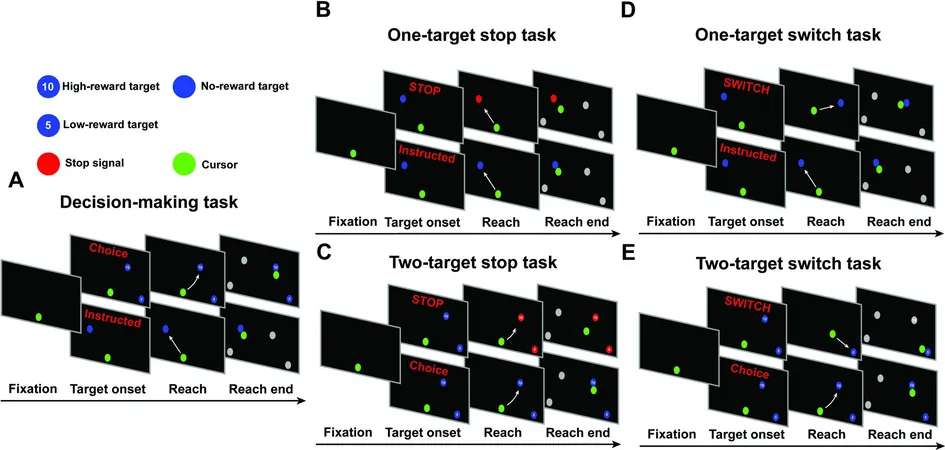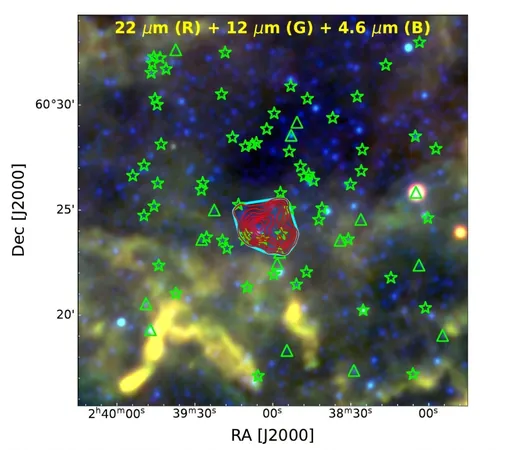
Breakthrough Discovery: How Our Brains Switch Gears Could Revolutionize Parkinson's Treatment
2025-04-28
Author: John Tan
A groundbreaking study from USC sheds new light on the enigmatic workings of our brains, revealing how we effortlessly switch between motor actions—a discovery that could be a game changer for Parkinson's patients.
Published in the journal PLOS Computational Biology, this research delves into the brain's intricate mechanisms that allow us to adapt our movements swiftly, akin to a top NBA player who can pivot mid-air to avoid defenders and pass perfectly to teammates.
The Brain's Secret to Smooth Transitions
Our ability to adapt on the fly—whether it's pulling open a door only to realize we need to push or navigating sudden obstacles in traffic—is attributed to a complex cognitive function. This study answers a long-standing question in neuroscience: Is the mechanism we use to switch actions the same as the one we use to halt movements?”
Lead author Vasileios Christopoulos, a biomedical engineering assistant professor, and his team used sophisticated mathematical models to uncover that the action of switching is not merely an extension of stopping. Instead, it actively suppresses the previous action, facilitating a more seamless transition to the new one.
Implications for Parkinson's Research
Understanding this mechanism is crucial, especially for the 90,000 Americans who receive a Parkinson's diagnosis each year—many of whom struggle with delayed reactions and stilted movements compared to healthier individuals.
The USC research team monitored Parkinson's patients engaged in video game tasks, observing their brain activity through innovative deep brain stimulation techniques, which allow researchers to see the brain in action.
Christopoulos notes that this process accesses the subthalamic nucleus (STN)—often referred to as the brain's 'braking system.' In patients with Parkinson’s, this area becomes overactive, leading to tremors and slow movement.
A New Frontier in Treatment and Technology
The team's novel findings could pave the way for better clinical treatments for Parkinson's and even serve as a foundation for creating biologically-inspired technologies, like autonomous vehicles that mimic human decision-making.
Christopoulos explained that future steps involve analyzing data collected from patients undergoing stimulation. By comparing these real-time results with their computational model, the team aims to deepen our understanding of motor function and potentially mitigate side effects of current Parkinson’s treatments.
As this groundbreaking research continues, it holds promise not just for enhancing patient care, but for innovative applications in robotics and beyond, potentially revolutionizing how we conceive of movement and action in both health and technology.

 Brasil (PT)
Brasil (PT)
 Canada (EN)
Canada (EN)
 Chile (ES)
Chile (ES)
 Česko (CS)
Česko (CS)
 대한민국 (KO)
대한민국 (KO)
 España (ES)
España (ES)
 France (FR)
France (FR)
 Hong Kong (EN)
Hong Kong (EN)
 Italia (IT)
Italia (IT)
 日本 (JA)
日本 (JA)
 Magyarország (HU)
Magyarország (HU)
 Norge (NO)
Norge (NO)
 Polska (PL)
Polska (PL)
 Schweiz (DE)
Schweiz (DE)
 Singapore (EN)
Singapore (EN)
 Sverige (SV)
Sverige (SV)
 Suomi (FI)
Suomi (FI)
 Türkiye (TR)
Türkiye (TR)
 الإمارات العربية المتحدة (AR)
الإمارات العربية المتحدة (AR)